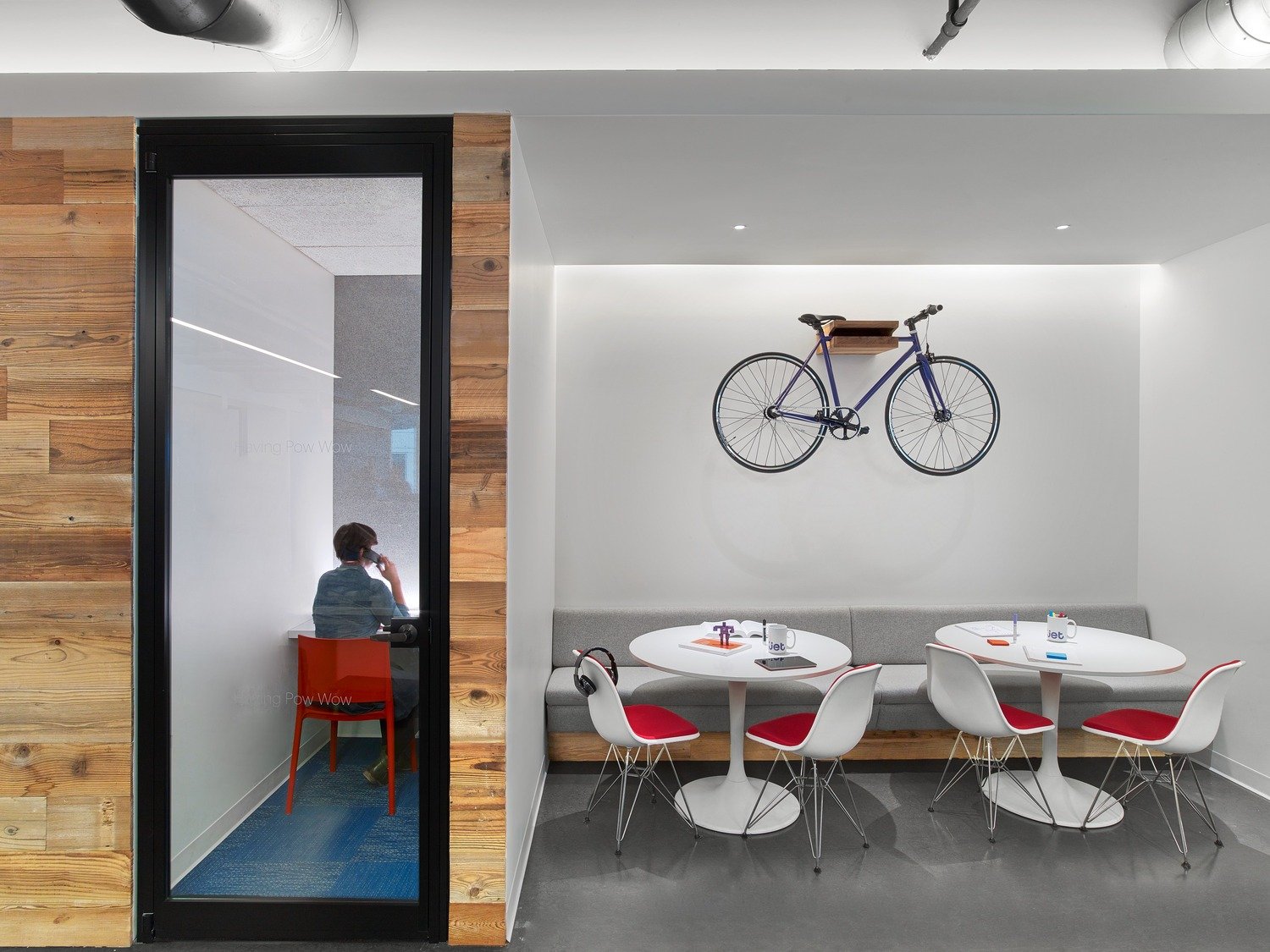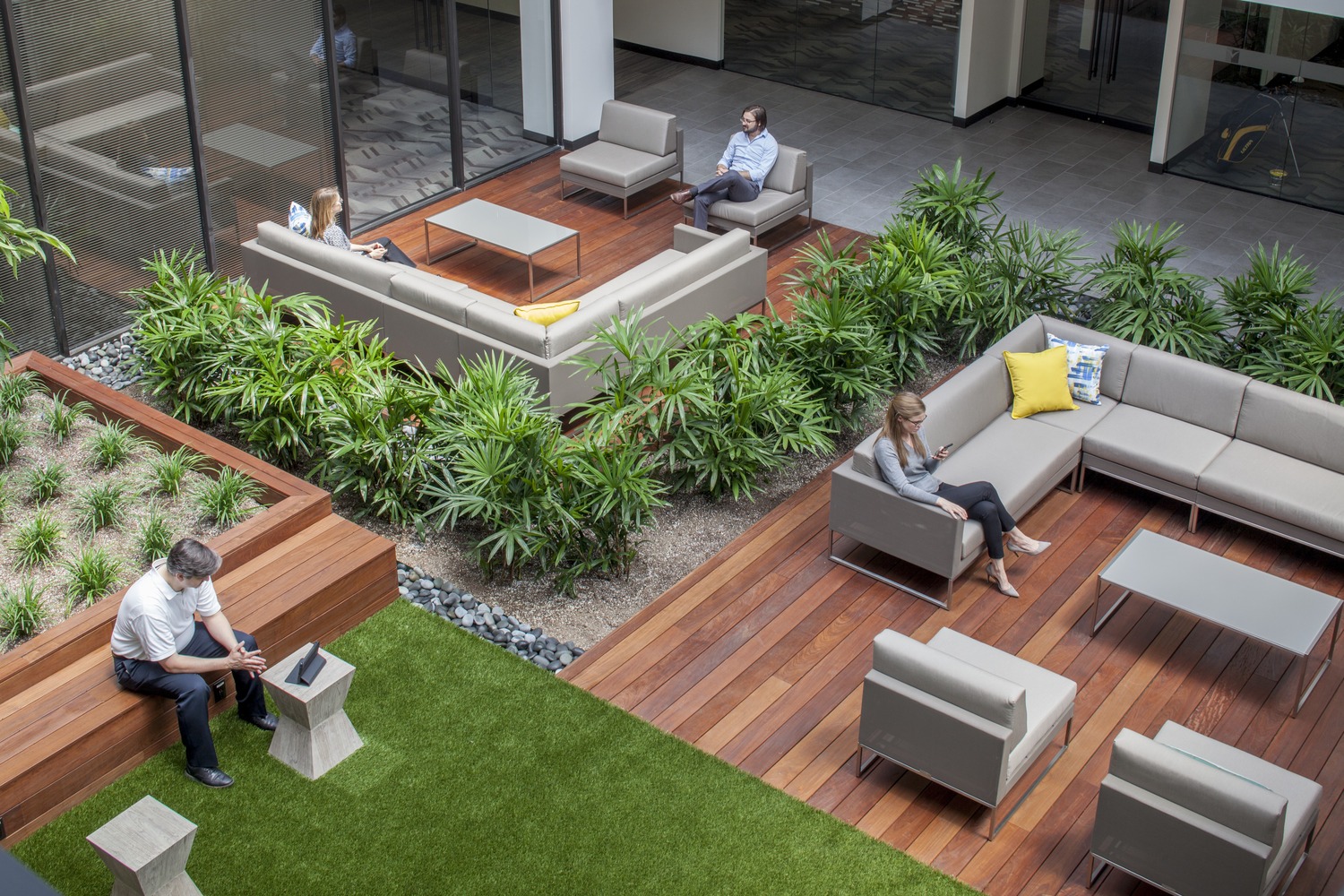
December 14, 2016
Designing Workplaces for Clarity of Mind
How can the design of office space encourage creative thinking, facilitate problem solving, or enhance concentration and diligence?
SapientNitro Miami, in Miami FL: Providing a variety of single occupant options gives employees a choice when they need to signal to their coworkers that they are in focus mode.
Courtesy Eric Laignel
In a knowledge-based economy, most of us are being paid to think—and thoughtful workers equal good business. Designing office spaces for clarity of mind is fundamentally different from designing factories for manufacturing, or workshops for assembling, or stores for selling. So how can the design of office space encourage creative thinking, facilitate problem solving, or enhance concentration and diligence?
The historical model of the office space was enclosed offices for management and open steno pools for the rank and file. Presumably those executives were thinking big thoughts in their spacious, quiet offices. Anyone who could maintain their focus and think big thoughts out in the noisy, tumultuous bullpen was someone who could advance up the ladder and get their own private office one day. Management was not concerned with making employees feel appreciated, or even interested in communication. Even with an “open door” policy, it was still pretty intimidating to approach your boss by encroaching into their inner sanctum.
Contrast that with the current model of open collaborative space, where everyone can see and hear one another, even managers and bosses. Does this automatically translate into a culture of openness and communication? No, of course not. But it does pre-suppose that managers are not the only ones who are allowed, or expected, to think big thoughts. It also means that, like it or not, all staff in open offices are liable to being interrupted more frequently than the denizens of private offices. This is not necessarily a bad thing, if there are options for uninterrupted quiet time to work on focused tasks. For years now, designers have been making beautiful amenity spaces for everyone to share, and offering shared private rooms, like huddle and phone rooms, to counteract the lack of separate, private offices.
Equally important as privacy is a healthy workplace. A recent study by the Harvard School of Health asked participants to work 8 hour days in a controlled environment (the Total Indoor Environmental Quality Laboratory at Syracuse University), where researchers had the ability to vary levels of CO2, VOCs and ventilation rates. Sophisticated tests were administered to measure the participants’ abilities to take in and utilize information in response to complex real-world scenarios. All three variables had measurable and significant effects on the ability of the participants to think clearly: scores increased up to 101 percent higher when optimum environmental conditions were provided.
So, can open office spaces work for big thinkers who need quiet space for heads-down time? Resoundingly, yes! But it must be a product of not just the physical design, but the office culture. Designers and employers can create and support office culture in a variety of ways, from how the space is laid out, to furniture selection, to the organizational concepts behind the space as whole. As technology moves forward, we will see buildings systems that help support that culture, by interacting with people (and their wearables!) to respond to the building users’ needs, perhaps even before the users are themselves aware of what would make them more comfortable. Imagine that…responsive architecture, friendly workspaces, and well-being as the keys to success. It is clear that design for well-being will be the guiding principle of tomorrow’s workplace.
Diane Rogers is a licensed architect, interior designer and WELL Accredited Professional. As the Wellness Leader at IA Interior Architect’s San Francisco office, she brings her passion for wellbeing to bear on a range of high-tech projects.

Jet.com in Hoboken, NJ: Phone rooms allow for uninterrupted concentration while taking a call, without worrying about disturbing neighbors.
Courtesy Eric Laignel

Caddo Holdings, Dallas TX: Taking a moment to enjoy a natural environment uses biophilic design principles to increase employee contentment and clarity of mind. These outdoor elements provide a moment of respite, to refresh and recharge.
Courtesy Thomas McConnell
Recent Viewpoints
Viewpoints
Navigating the Path to Net Zero





